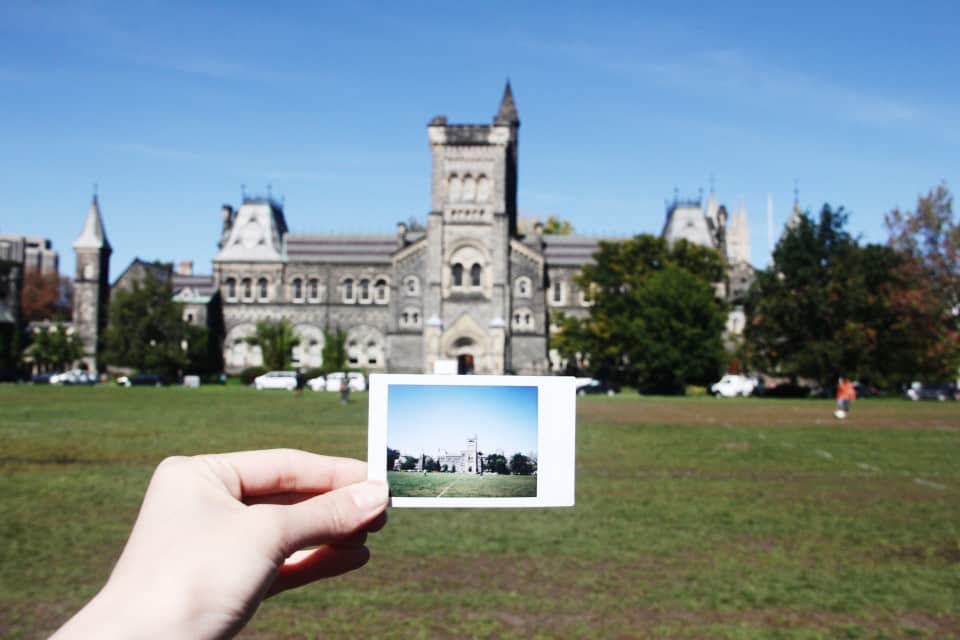The walk through the middle of the St. George Campus will soon have a new look. Front campus, connecting the west and east ends of St. George, will soon be redesigned by KPMB Architects, Michael Van Valkenburgh Associates (MVVA), and Urban Strategies.
Shirley Blumberg, the design team leader, said that she is ecstatic to be working on the project. Their team consists of multiple U of T architecture graduates, including Blumberg.
The consortium of these firms was chosen after a lengthy selection process with over 600 proposals in consideration. The public was invited in September 2015 to review the proposals and select the winner.
In this new design, students can expect webs of pathways that connect both side of Front campus, a pedestrian bridge connecting Hart House to Queen’s Park, pavilions that house exits to the parking garage, coloured pavement and a new lighting scheme.
“In any creative work there is a high motivating factor of fear that keeps you going,” said Blumberg, alluding to the high profile nature of the redesign. “The most exciting thing in the bold vision is finally removing the cars from the circle. There is no point in doing anything unless you do that.”
KPMB, MVVA and Urban Strategies will have until September 2016 to submit an outline including estimated cost and engineering needs.
First-year life science student Mahreen Khan said that she is excited about the design even if the construction disrupts students. “There is the esthetic purpose, but also after it’s built completely I am sure that it will be worth it in the end.”
“As long as they manage it properly and like I said we are not trying to run through construction to get into class on time,” said Khan.
In the proposal, King’s College Circle will become car free, moving parking underground. Instead, a focus on pedestrian and cyclist needs will take precedent.
Julie Hudson, a fourth-year statistics specialist, is also excited about the redesign but is worried about those with mobility issues. “I broke my ankle and I am in a cast, and I am sure that there are lots of people with mobility issues who need to be dropped off in front of where they need to go and if they close off to cars that wouldn’t be possible, so that is one concern.”
Blumberg noted that the underground parking garage will be on a mixed-use space that could house bicycles and scooters. “We see it as an incredibly important space,” she said. “We are hoping to make the best garage you have ever seen.”
All three firms have worked on university redesign projects before, bringing green spaces and student-centred design to campuses across North America.
Blumberg noted that their’s was the only design that did not retain the campus’ circular shape. Joseph Bivona from MVVA agreedL “our design is inspired by the idea of thickening that edge to welcome lingering and invite occupation. That space after all, is actually larger than the central part of King’s College Circle itself, which I don’t think people realize.”
Until the final draft in September 2016, the plans are open to critique.
“In the end, university is about social and intellectual exchange and interaction and discourse and I think these spaces could have a tremendous impact. What we are trying to do here by removing the cars from the circle [is that] we are changing these spaces from being parking lots and sports fields into a public realm that is really for pedestrians and cyclists,” Blumberg said.
Bivona said that they treated the redesign as a park more than anything else. Both he and Blumberg alluded to the connection the space has to Toronto as a whole. “We spent a lot of time thinking about the interface between city and campus and about how to really celebrate those moments of arrival and to welcome members of the greater public into the space,” Bivona said.
“Our proposal has also been based on the premise that the site actually works pretty well as it is, that the bones of it are actually very strong – and it’s just a matter of amplifying all of the site’s great qualities,” he added.


